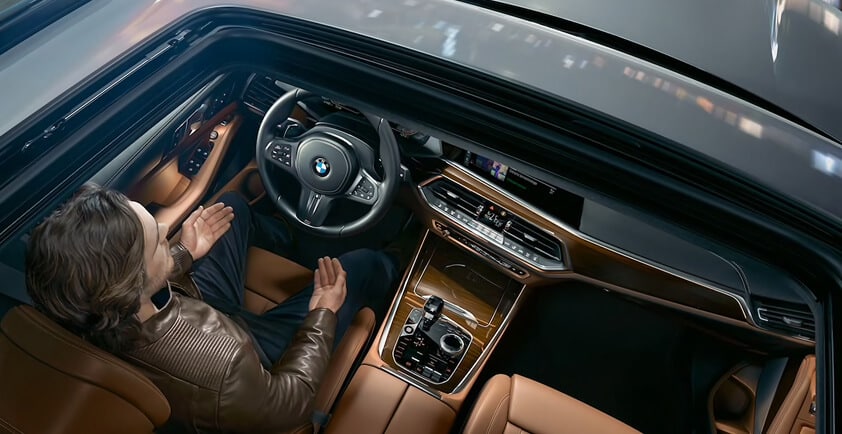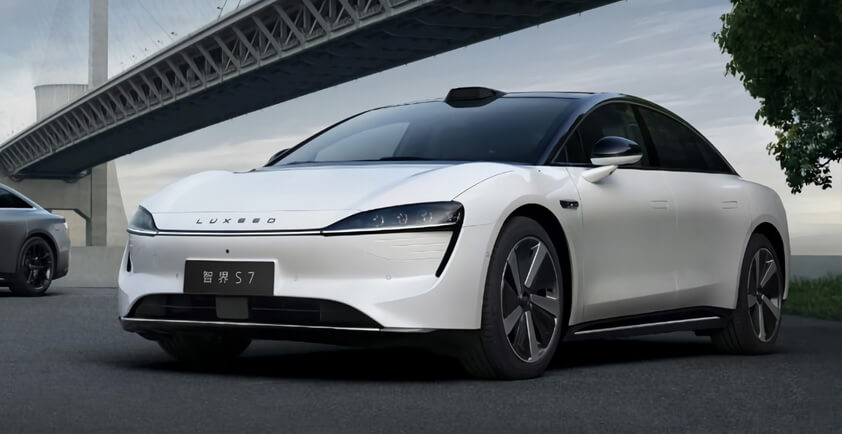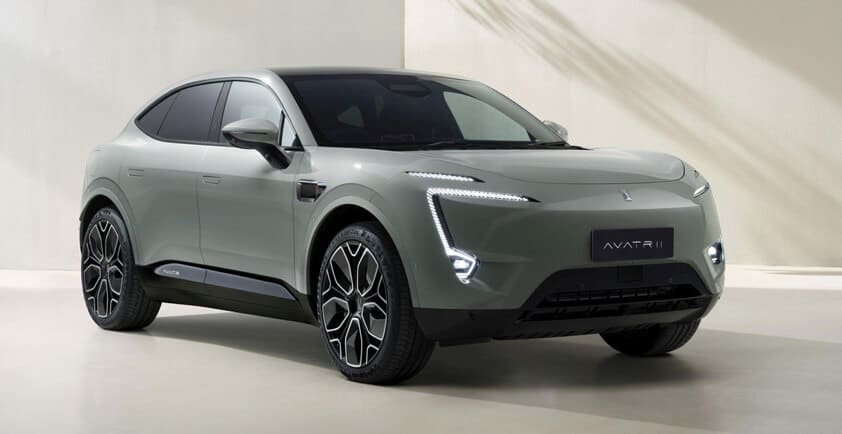

HUAWEI & BMW JOIN HANDS TO REACH AUTOMATED MOBILITY
>> Automotive innovator BMW and technology giant Huawei join European Commission CCAM to change transportation sector landscape
By the end of next decade, it looks as though the European Commission’s Co-Programmed Partnership, CCAM (Connected, Cooperative, Automated Mobility), will have successfully driven the creation of a functional automated transport system, with some of the key members urging the project forward being BMW and Huawei.
"Connected, Cooperative, and Automated Mobility is a partnership under the research programme of the European Commission, which is called Horizon Europe, from 2021 to 2030. We will combine all research activities on a European level, where all these aspects are mentioned ‒ it's a cross-sectoral partnership," says Armin Gräter, Chairman of the Board of the European Public/Private Partnership on CCAM, who is also Director of Digitalisation and Automated Driving in Brussels for the BMW Group.
"The main targets are making traffic in Europe safer and more sustainable, while also generating more competitiveness for the European industry," Gräter says. "We have more than 180 members from authorities, research, industry, road operators, and service providers. All these are combined in collaborative actions of research and innovation, which will lead to at least two large scale demonstration projects in the last phase of the programme."
The whole programme consists of seven clusters that slice the big overall goal into individual pieces for which the partners work to identify a viable solution. These solutions will then be combined to reach the final goal of large-scale demonstration in cities, fueled by around €1bn in funding from public and private partners over the next 10 years.
"All these seven clusters fall under the control of CCAM and they start as a basis of coordination for the whole programme," says Gräter. "Then we have four technical clusters, which are vehicle technology, validation, transport system, and key enabling technologies with a focus on artificial intelligence."
Under the coordination framework ‒ which focuses on common methodologies and data exchange ‒ these clusters are paired with elements relating to societal aspects and user needs. These 6 will then lead to the most important cluster: one large-scale demonstration, which happens in the last phase of the programme, targeted to be around 2025-2027 onwards.
BMW and Huawei in partnership
CCAM is a long-term project to bring all the disparate elements together so that the world, starting with Europe, can have the best initial vestiges of an automated system. After a turbulent period, this is an inevitable change towards a more efficient system.
"BMW started working on these projects many years ago ‒ since 2005 ‒ especially when it comes to demonstrations, validation and also regulatory aspects," Gräter says.
"BMW has a high interest in gaining a better understanding, as well as providing input to the whole external framework, because we believe that standardisation of technology, regulation of the safety aspects and overall system approach are key factors to bringing successful solutions to the market."
Telco giant Huawei represents physical and digital road infrastructure suppliers on the CCAM board. The company is currently working with Chinese and European cities to deploy C-V2X traffic solutions globally and facilitate autonomous driving.
"Huawei is recognised as a telecom provider, but we actually do a lot of technology development, so we have products and solutions aimed at automotive and road transport," says Jan Ellsberger, Vice President of Industry Development at Huawei Technologies and Member of the Board of CCAM.
"We are actually a supplier to vehicle manufacturers. We provide the digital platform covering vehicle control systems, intelligent driving and sensor systems. We also have the whole electric power drive system including the charging system, battery management, and even charging pile solutions."
To introduce automated or self-driving vehicles on roads, a certain level of infrastructure support is needed ‒ and this is where Huawei comes in with its cockpit solutions, associated intelligence- for-cloud services to support the environment in the vehicle itself, and digital road infrastructure solutions.
"We see our role in the partnership is that of a technology provider ‒ we have quite innovative solutions in this space, and we would like to contribute this to fulfil Europe's ambitions in becoming a world leader when it comes to the deployment of automated transportation solutions," says Ellsberger.
Digital technologies such as Artificial Intelligence (AI) will play a greater role in transport, meaning that carmakers will be able to monitor their vehicles in a real-world environment, tweaking the driving experience and coupling it with machine learning to increase autonomy.
"To make the roads smarter, you deploy sensors on an AI-based solution that enhances perception and also provides the authorities of traffic management systems with the means to safely operate a mixed traffic flow, where there are both automated driving vehicles and conventional vehicles sharing the same road," he says. "In addition to that, of course, we also have the cellular connectivity side with 5G and its evolution."
Huawei now develops and integrates smart cockpit solutions for cars using the new Huawei smartphone operating system, Harmony OS, as a basis. In-vehicle applications enable the possibility of combining the car’s resources with a smartphone’s IT resources, welcoming increased efficiency and a seamless user experience.
The future of mobility
When it comes to introducing new technology, educating consumers always comes first in the process: after the implementation of the technology, time is needed for the way consumers operate to be both generationally and psychologically altered, which can be a challenge on its own.
"In the future, you will have more immersion, because the driver is going to be less involved in driving. It might take decades but, for the time being, we have a transition," says Francois Fischer, Expert on Connected Vehicle Standardisation and Policy for Huawei Consumer Business Group. "Our challenge now is using emerging but already existing technology to create the best experience. I think a car and its environment are like a smartphone, it's about application now."
Fischer believes that not knowing what the future will be like is also a key challenge for businesses, as there’s the possibility that it may vehemently change consumers’ behaviour towards their products
"When cars are going to be either shuttles or fully automated vehicles, what will branding versus user experience mean?" he says. "I think the main difference between cars now is the brand and user experience. If you look at today's models of cars, you will have very similar functionality for use, thus the differences are created by the branding and the resulting user experience. This is a very similar situation for smartphones."
To adapt to new consumer behaviour, for instance, BMW runs a programme on its Mini brand for peer-to-peer car sharing on a private level, which has been running quite successfully. This programme reveals consumers’ tendencies, even amid a shared economy.
"So yes, it will be more about car usage. Also, though, there will be segments of the market ‒ many communities ‒ who will share their Minis, but also because they want to have the experience of the other Minis. This is also a matter of brand shaping," says Gräter.
"The idea of saying that there is a fleet of cars in a city and all these people will use these cars ‒ this can be the case for the future. But if it's based on the majority of use cases, people will still want or need to drive a car."
From city to countryside
The CCAM programme has now secured all its enablers, which is the baseline of the necessary technologies. These research projects are now considered to be in the middle phase of the programme, needing to reach maturity ‒ projected to be from 2023 onwards ‒ before they can really provide useful functionality on the road in terms of driverless mobility.
"What we are looking at is very much into the stepwise approach, giving feedback from an industrialisation point of view," says Gräter. "We are teaming up with many partners from all industries to come to the right standards, to get the same level of technology-neutral standards that help find the best solutions with technologies."
Gräter admits that the current approach is leaning more toward city solutions, but the programme is also heading towards countryside solutions. Getting people to understand what these advancements mean from a technological point of view is, however, the key task for CCAM.
"If I'm bringing these technologies on the road for mobility solutions, it means that artificial intelligence applications need to be widely understood and accepted, as well as from a validation and regulation point of view, too. They will look into concrete technologies, such as computer vision in cameras, voice recognition, traffic sign recognition, but also within the overall system," he says.
"For example, the whole validation stream method of mobility will increase in quality and allow for large-scale validation of scenario-based technologies all over European cities, in particular, but also in the countryside. In the third phase of the programme, we will see large-scale demonstrations in big cities all over Europe, aiming to demonstrate that connected cooperative automated mobility will have industrial solutions within Europe."
Choosing Europe to be ‘ground zero’ for such a project is considered natural, what with its robust advancements and demands in transportation. Nevertheless, to actually achieve the goal, the members admitted that some global-scale syncing is necessary.
"The automotive industry in Europe is world-class, so Europe will have a headstart when it comes to really trialling those solutions," says Ellsberger. "I think global alignment is something that is important here, so we need a conjoined effort from Europe and the other regions to ensure that we have as much harmonisation as possible and prevent regional differences that create problems for the manufacturers."
With AI, IoT and all the new technology involved in mobility, it boils down to whether the industry is able to organise the data or not.
"You need to solidify the security, because you share data across all the key stakeholders in the mobility industry," says Ellsberger. "It needs regulation and the standards to be in place, from a regulator’s point-of-view, to force all those stakeholders to actually share the relevant data and to allow data sharing. From the European Commission's point of view, there's a lot of effort and focus on the new data regulation coming up associated with the data for the mobility sector. There will be a lot of activity in Europe to enable this."
On top of the cross-region alignment, according to Gräter, it is also necessary for communication between different partners to be clear and efficient, while still leaving room for technology innovation for service providers and manufacturers.
"The point is that this partnership has a focus on research. It also supports innovation and technology projects, especially when it comes to large-scale demonstration, but it's always clear that all companies, all industries that are contributing, are always on a pre-competitive level with their engagement."
Gräter points out one key success factor in Europe that differentiates the region from other parts of the world.
"It is that the European Commission offers such funding ‒ not only by venture capital or use cases, but on purpose, to generate cooperation between local, regional, national and European authorities, and this is combined with industrial solutions and resources, as well as the research community, making a common effort to solve the problems of society," he says. "This is a big advantage of the European approach."













